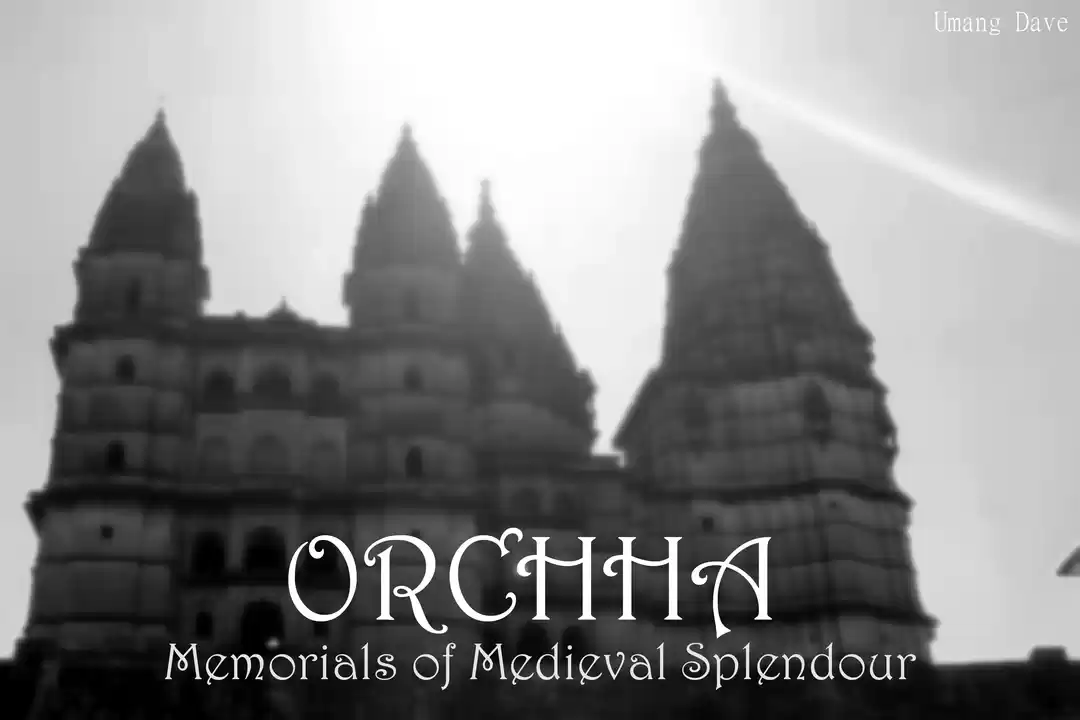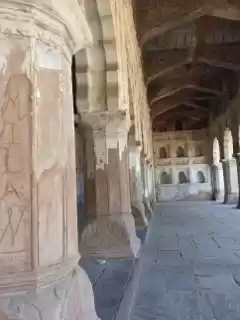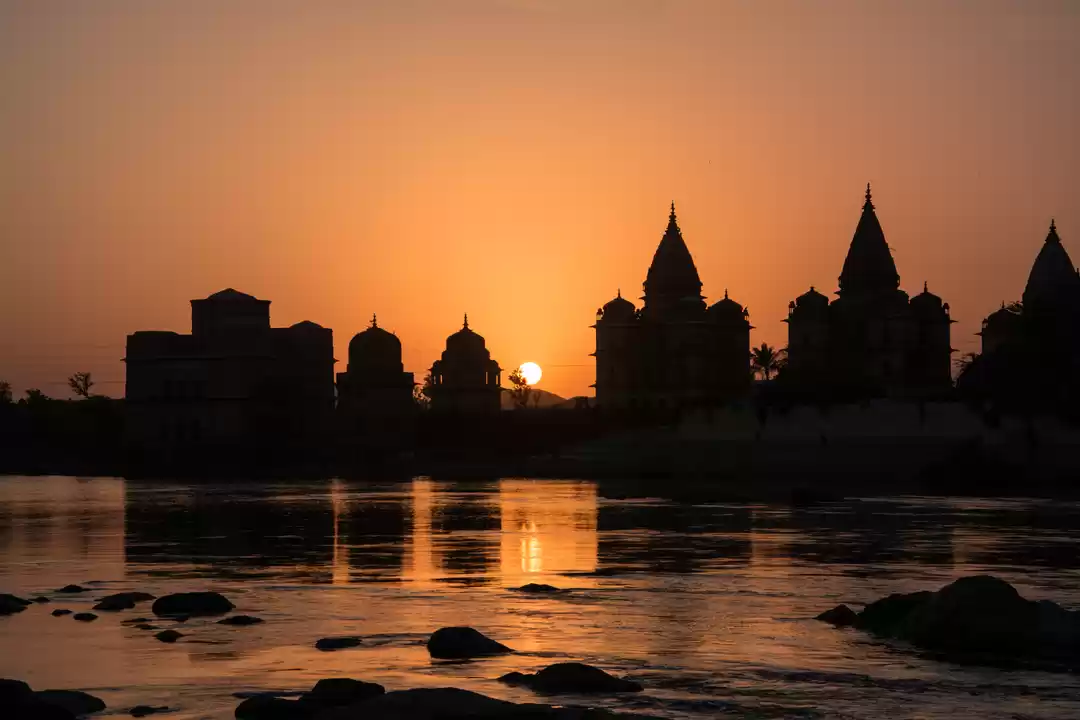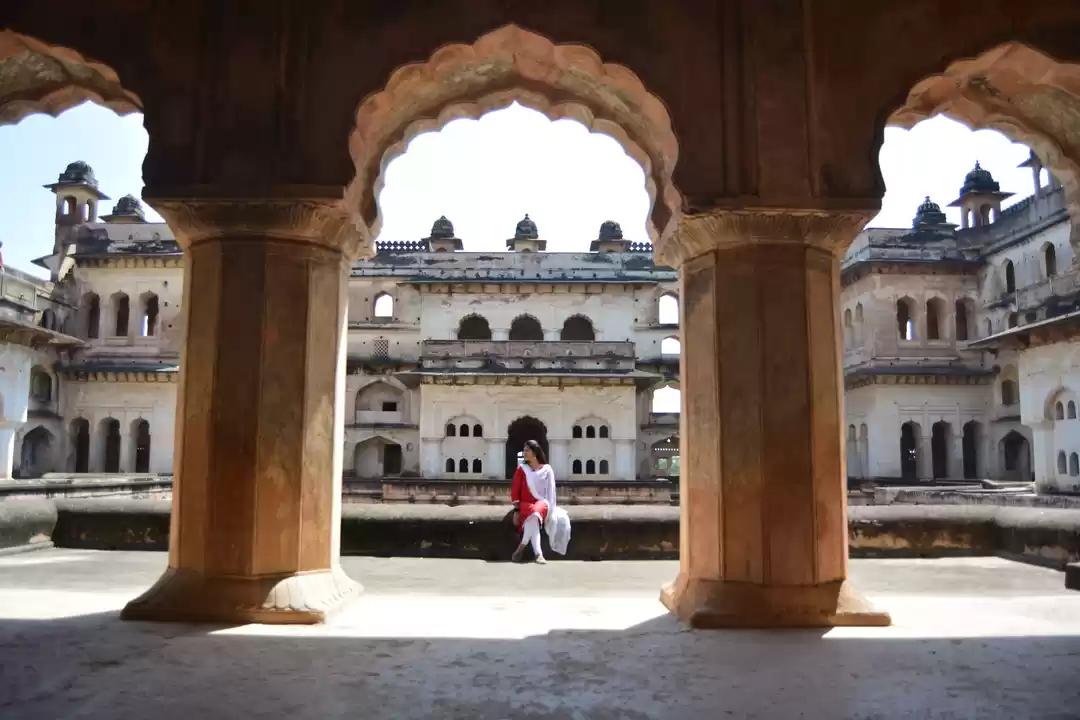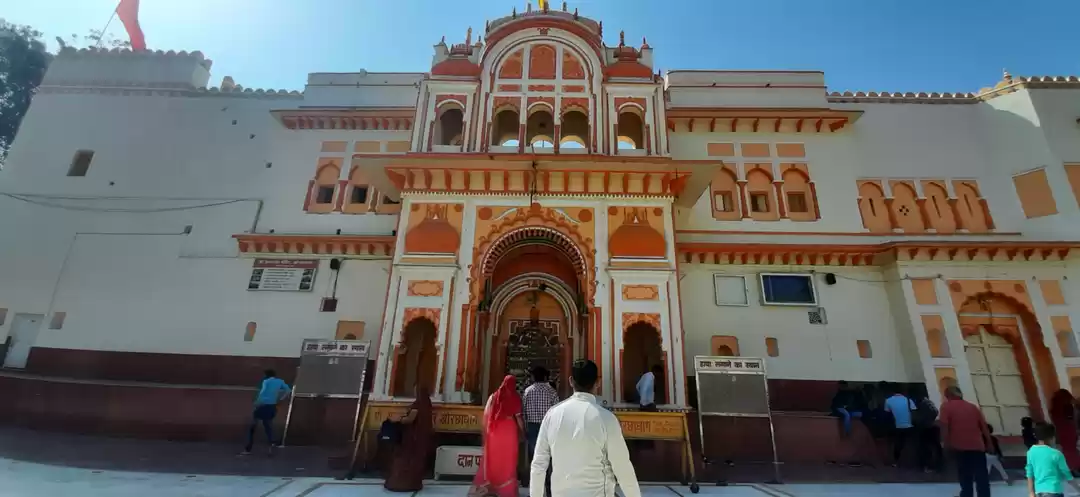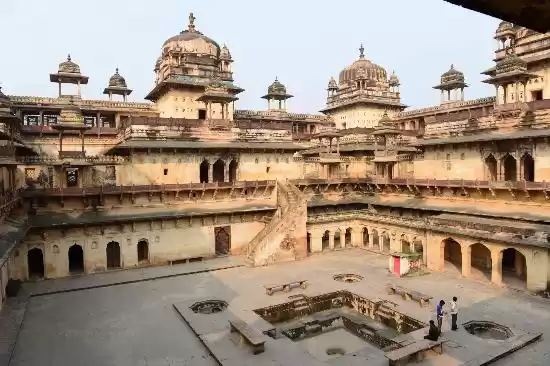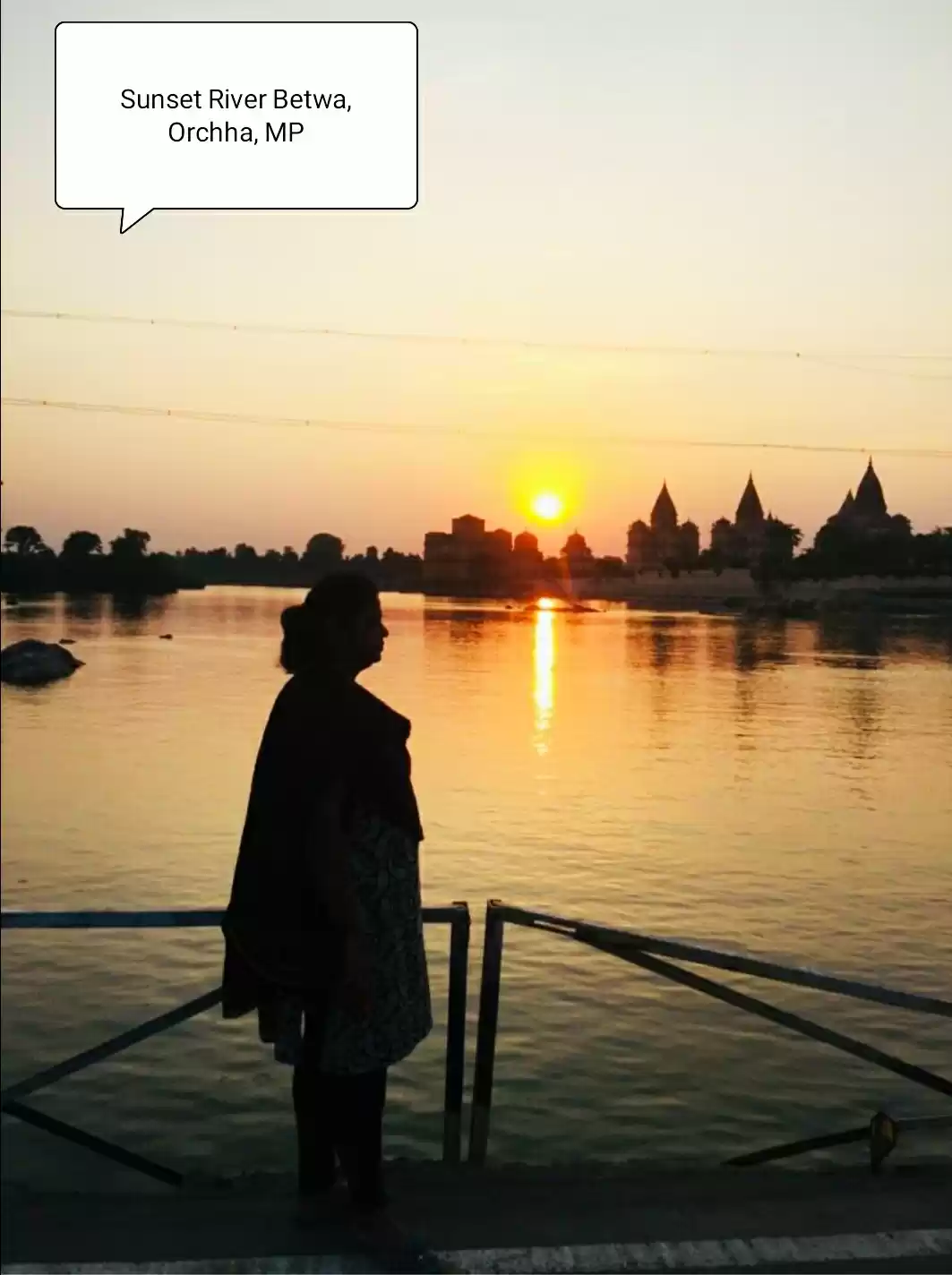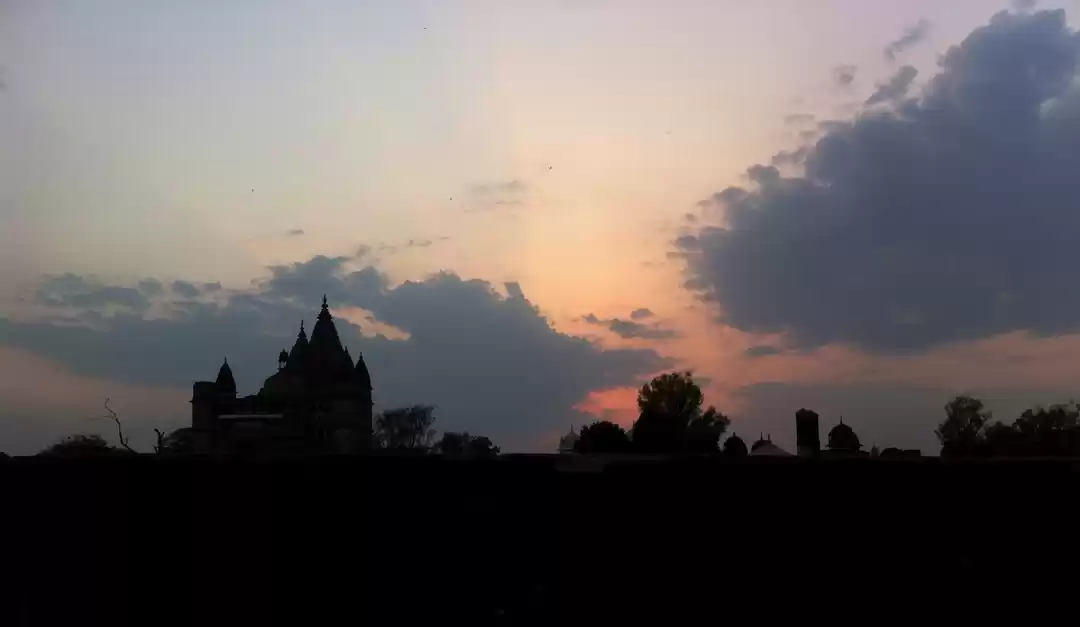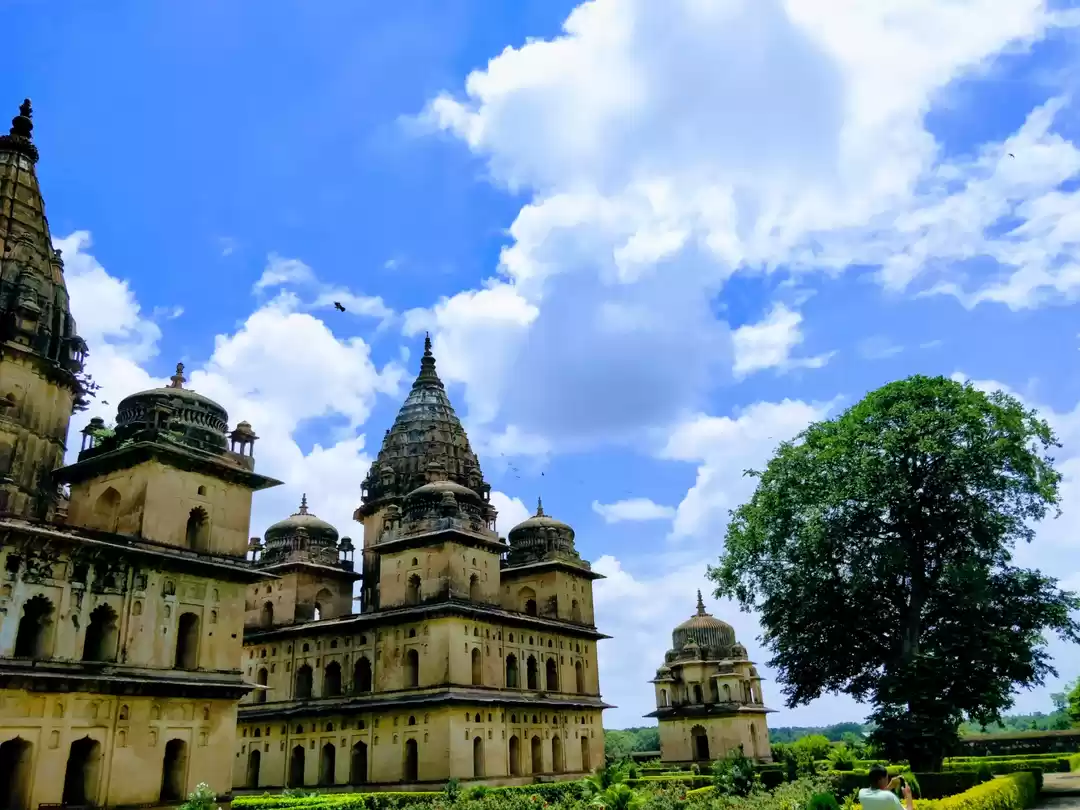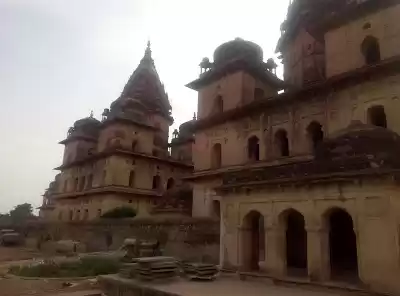







The clank of a key turning in the corrugated metal door reverberates in the odd main assembly hall of the temple characterized by domed lofty ceilings and walls devoid of carvings. A dark claustrophobic passage climbs from the Mahamandapa to the upper floors and opens onto the roof marked with a dome and surrounded by delicately carved towers. The erstwhile capital of the Bundelas – Orchha - awakens to a chilly winter morning as the sun fights its way through the comfortably settled haze. The Chaturbhuj Temple dominates the skyline of Orchha offering a birds’ eye view of the town and dwarfing the other architectural marvels dotting the brazen landscape of Bundelkhand. The cramped market place below leading to the Rama Raja temple is stirring with activity of vendors selling sweets, jewelry and refreshments. The silence of the morning is occasionally broken by cries of several Indian Long-Billed Vultures nesting in the cupolas of the temple. To the east the imposing edifice of the Raja and Jehangir Mahal aims for the sky, to the south the azure Betwa snakes through the undulating rugged terrain, to the north remnants in the citadel bask in golden sunshine and to the south the parched land stretches to the horizon. And though its appearance maybe shabby compared to its heydays the charm of this medieval city has successfully battled the grind of time and refuses to be lost in the dungeons of obscurity.
The citadel that sits on a river island and is accessible by Bir Singh Bridge houses the impressive Raja, Jehangir and Sheesh Mahal. It is believed that Lutyens, the architect of New Delhi, derived inspiration from the palaces of Orchha and Datia that incorporate several styles of architecture – Bundela, Rajput, Mughal, Jain and Delhi Sultanate. The multi-storied palaces are strikingly beautiful with their open courts, murals painted on walls and ceilings of important chambers, cut stone-work grilles, coloured ceramic tiles and curved brackets. The paintings, apart from depicting mythological stories, throw light on the social conditions of the time. The ornate Jehangir Mahal was built by Bir Singh Deo – the most influential of Bundela rulers – to pay respect to his patron Jehangir whom he had helped during a bloody ascension struggle. In the late evening when crowds of enthusiastic tourists have reduced to a trickle climbing to the top floor and watching the sun transform into a ball of orange and paint the sky pink is humbling to say the least.
The fickle tourist gaze often overlooks the not-so-spectacular structures in the citadel and that makes them ideal for exploration at your own pace; an early morning walk in the precincts is perfect to study the architecture and also relish the bird life. Several Kothis of nobles are scattered along the banks of Betwa- Dauji Ki Kothi, Purushottam Das Ki Kothi, Daroga Ki Kothi, Shyam Duau Ki Kothi, Rasaldar ki Kothi and Bakas Rai Ki Kothi – in varied degree of decay. Other notable buildings to the north of Raja Mahal are the Rai Praveen Mahal (Rai Praveen was a mistress of Raja Indramani who ruled from 1672- 75), stables for elephants, camels and horses, Panchmukhi Mahadev, Radhika Bihari and Vanavasi Temples. Beyond the Vanavasi Temple one can walk down to the isolated sandy bank of Betwa and enjoy a cool breeze caressing the river as low flying birds skim the restless current and disappear in the shrubs.
Walking towards the river, south of the Chaturbhuj Temple, one comes across fifteen chhatris or cenotaphs of the Bundela rulers that are built like temples – except the one dedicated to Bir Singh Deo that is square – and contain ashes of cremated princes and princesses. Surrounded by well-maintained lush gardens the cenotaphs are especially serene at sunset and are a favourite haunt of vultures. Another sunset point that captures the essence of the cenotaphs is across the river in the Orchha Nature Reserve from where one can relish these structures reflected in the blue waters of the river and their silhouettes framed against the golden sky as the sun scurries to the horizon.
The temples in the town have unusual architectural features not commonly found in other temples of the region and other parts of Central India - the dome or open court in the Chaturbhuj Temple, the Rama Raja Temple that was built as a palace by Madhukar Shah in the 16th century where Rama is worshiped as a King rather than a deity and the Laxminarayan Temple that has a triangular plan and battlements on the roof that bear more resemblance to a fort than a temple. The wall paintings in the Laxminarayan Temple are particularly striking and cover a range of subjects from mythology to history - panels illustrating stories from Ramayana and Mahabharata, scenes from Bundela court, an odd painting of two European soldiers drinking and the siege of Jhansi Fort by British East India Company.
Orchha is a historical destination that unlike places like Agra offers a wholesome experience complete with architectural brilliance and a laid-back country milieu. It has an uncanny likeness to ruins of another medieval city on the banks of Tungabhadra in the far south, Hampi, and yet it remains largely unknown to a larger audience. But if one has spent enough waking hours surfing travel blogs and forums it is highly unlikely to miss the numerous accounts of travelers falling in love with this forgotten town. So if you are aching for a getaway that is the right blend of history and rural allure, pack your bags and head to Orchha and rest assured the quest will not disappoint you!














